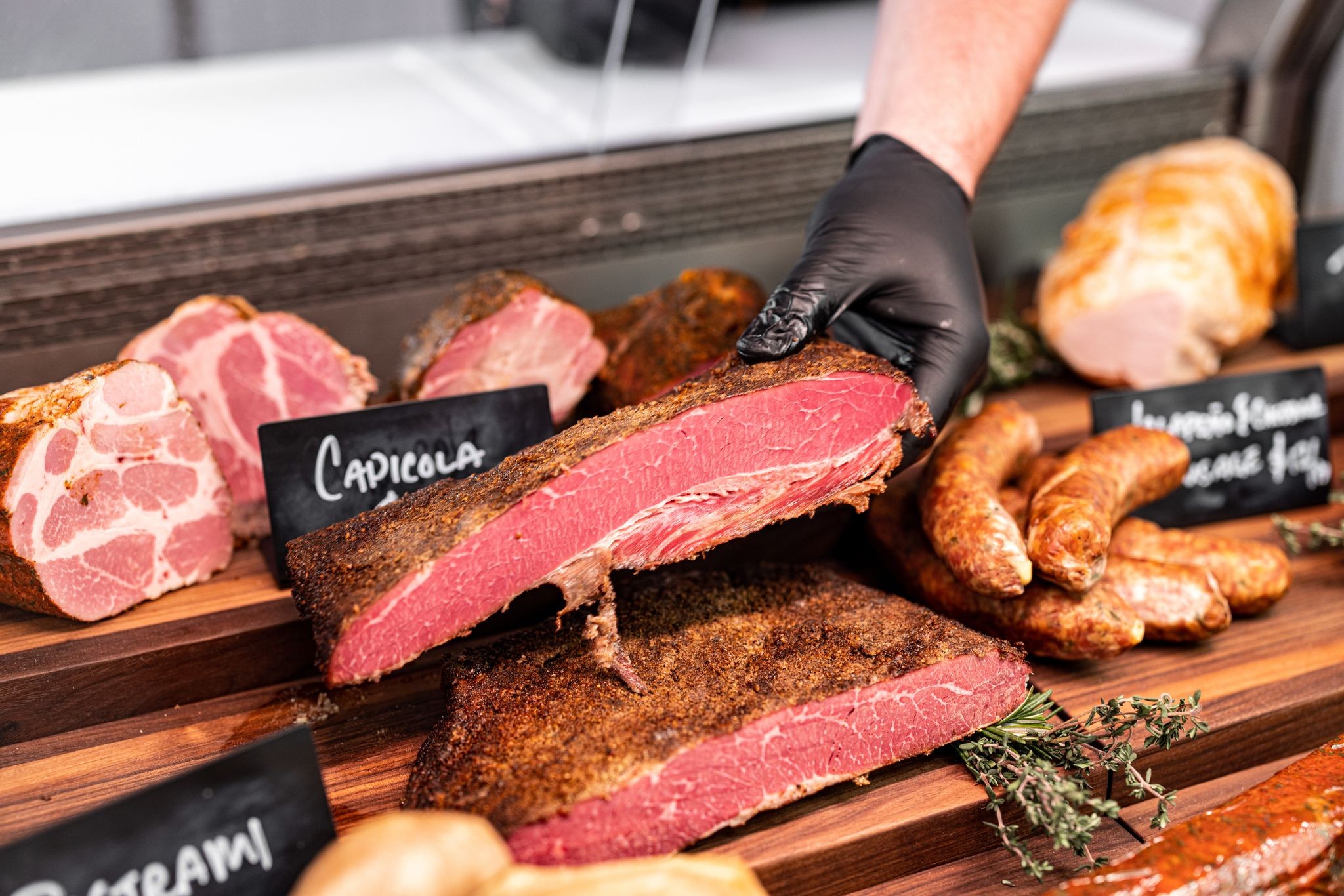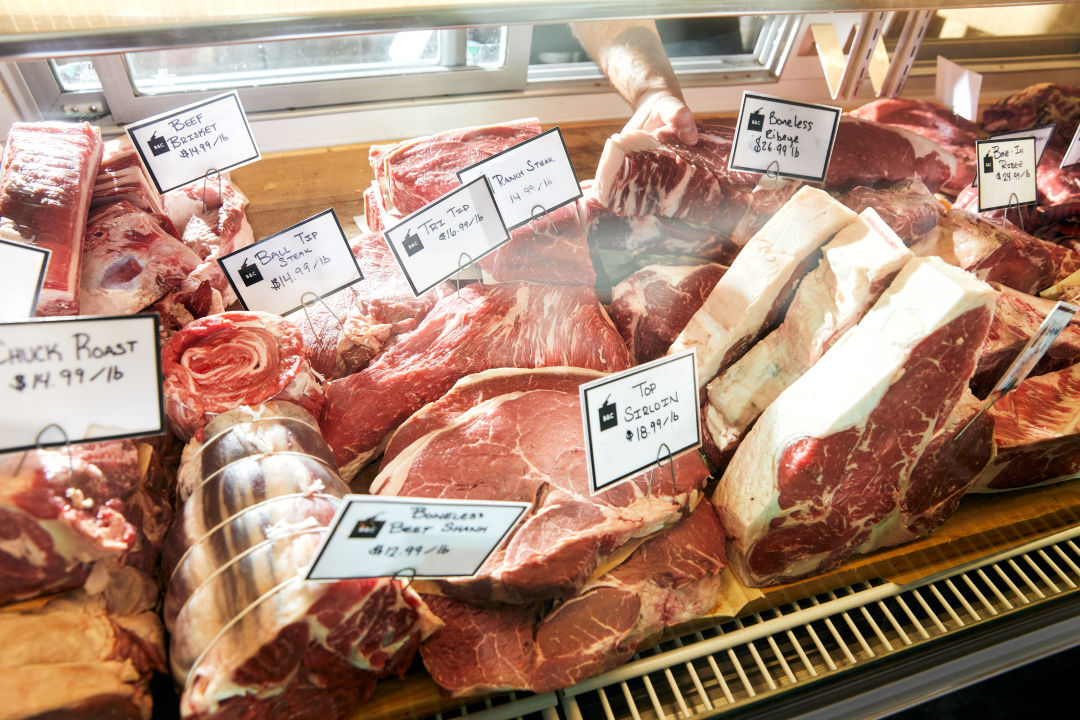Your Local Butcher: Bagley Meat Market Edwardsville IL
Your Local Butcher: Bagley Meat Market Edwardsville IL
Blog Article
Unlock the Secrets of Quality Meat Selection at the Nearest Market
When it comes to selecting quality meat at the closest market, there are different variables to consider that can significantly impact the preference and total experience of your meal. From understanding the intricacies of meat grading systems to identifying freshness, marbling, and optimal cuts for different dishes, the process of picking the finest meat can appear like a daunting job. Nonetheless, by diving deeper right into the source and manufacturing of the meat, in addition to discovering useful ideas for appropriate storage and handling, you can boost your cooking abilities and produce outstanding meals that will certainly leave your preference buds wanting more.
Understanding Meat Grading Systems
Comprehending meat grading systems is important for customers looking for high-grade cuts of meat. Meat grading is a volunteer procedure that assesses the high quality and uniformity of meat based on aspects such as shade, marbling, and maturity. The United States Division of Agriculture (USDA) is accountable for looking after meat grading to ensure that customers get exact details about the meat they acquire.
There are two primary meat grading criteria made use of in the USA: high quality grades and produce qualities. Quality grades analyze the flavor, tenderness, and juiciness of the meat, with USDA Prime being the best grade, complied with voluntarily and Select. bagley meat market edwardsville il. On the various other hand, yield grades focus on the quantity of usable meat obtained from a carcass, ranging from Grade 1 (high return) to Quality 5 (reduced return)
Recognizing Freshness and Marbling

After obtaining an understanding of meat grading systems, customers can currently turn their focus to determining freshness and marbling in the meat they choose at the marketplace. Freshness is an essential aspect when choosing top quality meat. One method to determine freshness is by inspecting the color of the meat. Beef needs to have a lively red color, while pork should be pink and chicken should have a pinkish hue. In addition, the meat ought to not have any repulsive smells, as this might indicate wasting.
When picking meat, look for well-marbled cuts to guarantee an extra flavorful and tender dining experience. By paying attention to quality and marbling, consumers can make educated choices and enjoy high-quality meat products.
Ideal Cuts for Various Recipes
When thinking about optimum cuts for different dishes, it is necessary to match the characteristics of the meat to the food preparation approach and dish requirements. For meals that need long, sluggish food preparation like braises or stews, harder cuts with even more connective cells, such as chuck or brisket, are ideal. These cuts break down during food preparation, resulting in tender, flavorful dishes. anchor On the other hand, for quick-cooking techniques like grilling or pan-searing, lean and tender cuts like tenderloin or sirloin are preferred to avoid durability.
Ground meat from chuck or round is excellent for recipes like meatballs or hamburgers, offering a great equilibrium of fat and flavor. When making roasts, such as a prime rib or pork loin, lean cuts with a layer of fat on the outdoors aid maintain the meat damp and tender during food preparation.
Understanding the Source and Production

Sourcing meat responsibly and comprehending its production process are vital actions in ensuring the quality and stability of the last item. By choosing meat from reliable sources, customers can have extra confidence in the top quality and security of the product they are purchasing.
Comprehending the production published here procedure of meat is just as vital (bagley meat market edwardsville il). Consumers should recognize exactly how the animals were increased, what they were fed, and whether any type of hormonal agents or prescription antibiotics were used during the rearing procedure. This details not just influences the top quality of the meat yet likewise has implications for animal welfare and environmental sustainability
Tips for Appropriate Storage Space and Handling
For ideal high quality and safety of meat items, appropriate storage space and managing methods are important. When storing meat, it is essential to keep it at the right temperature his response level.
For ideal results, cover the meat firmly in plastic cover or light weight aluminum foil before positioning it in an airtight container or fridge freezer bag. Thaw icy meat in the refrigerator or making use of the defrost setting on the microwave to protect against bacterial growth.
When taking care of meat, always clean your hands, utensils, and surfaces with warm, soapy water before and after call to avoid cross-contamination. Use separate cutting boards for meat and other foods, and chef meat to the advised interior temperature level to guarantee it is safe to eat. By complying with these storage space and taking care of pointers, you can keep the high quality and security of your meat items.
Conclusion
To conclude, understanding the art of selecting high quality meat involves recognizing rating systems, identifying freshness and marbling, selecting optimum cuts for various recipes, and understanding the source and production approaches. Proper storage and handling are also crucial to preserving the top quality of your meat - bagley meat market edwardsville il. By adhering to these standards, you can guarantee that you are choosing the most effective meat available at your closest market
From comprehending the ins and outs of meat grading systems to recognizing freshness, marbling, and optimal cuts for different dishes, the process of choosing the finest meat can seem like an overwhelming job.Recognizing meat grading systems is vital for consumers seeking premium cuts of meat. Meat grading is a volunteer process that examines the high quality and consistency of meat based on factors such as maturation, marbling, and shade. The United States Department of Agriculture (USDA) is accountable for managing meat grading to make sure that consumers receive precise info about the meat they purchase.

Report this page